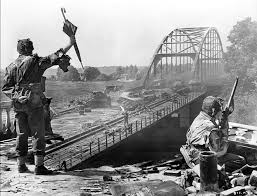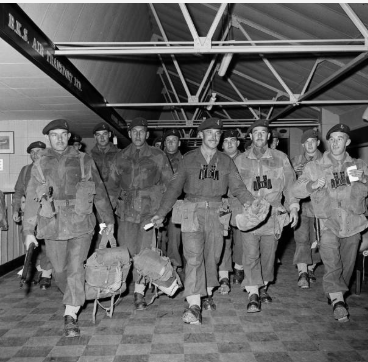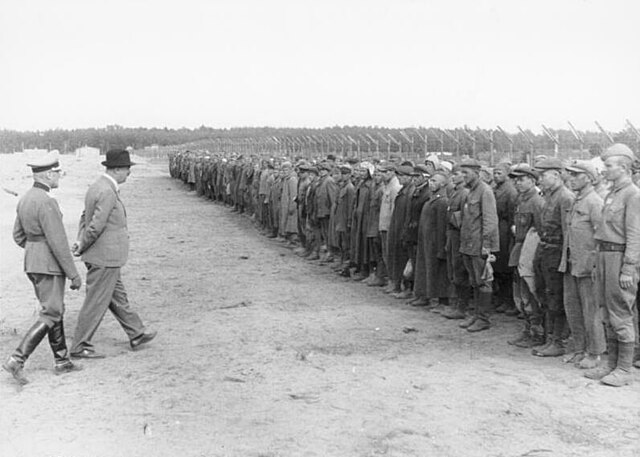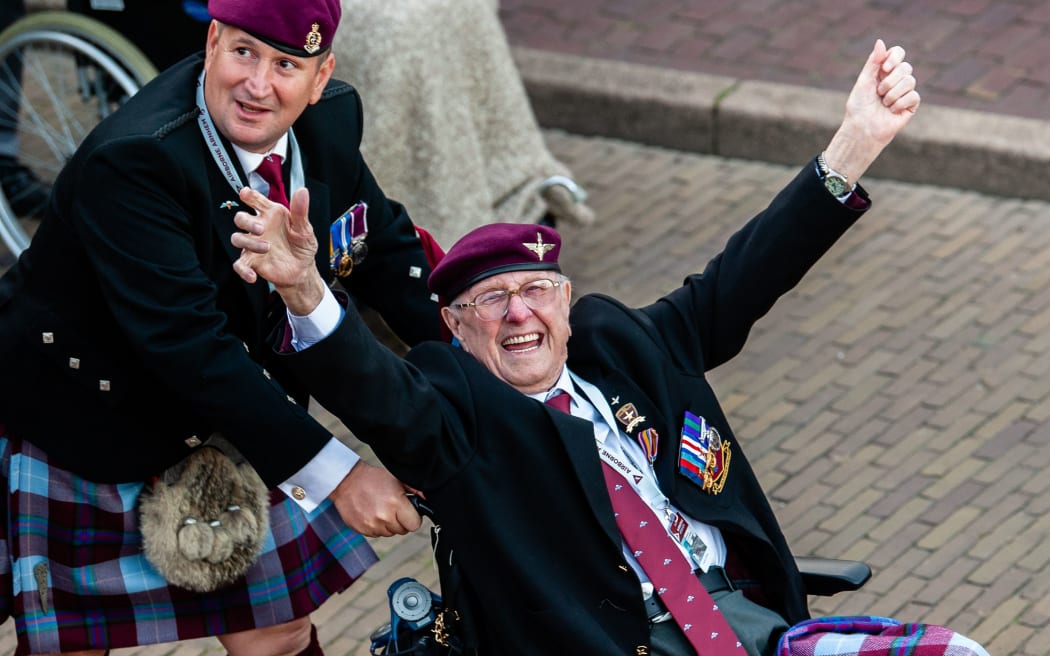Share this Story
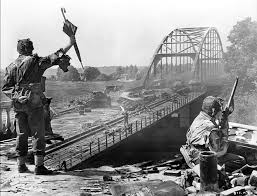
A Bridge too Far:
From Arnhem to Stalag XI-B – The Harrowing Journey of Capture, Captivity, and Liberation
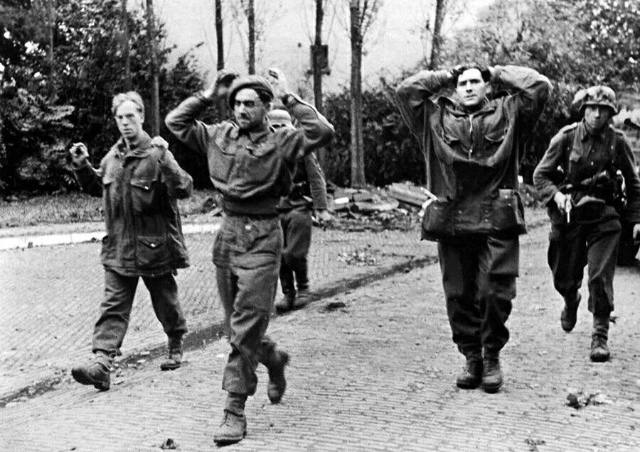
The Battle of Arnhem had ended in chaos and defeat for the British 1st Airborne Division, but for the men of the 3rd Battalion, it marked only the beginning of an even more grueling chapter in their journey. Captured by German forces, they were subjected to brutal treatment as they were marched into captivity. For those who survived the battle, the months ahead would be filled with unimaginable hardship, deprivation, and the hope of eventual liberation. Marecheal was one of those men.
They had parachuted into Arnhem full of purpose, pride, and camaraderie—but as they were marched away from the smoking ruins of the bridge, much of that had already been stripped away. What remained was survival instinct. These were soldiers now disarmed, wounded, and humiliated, yet still clinging to something deeper: the bond between them. They didn’t know where they were being taken, how long they’d be gone, or if they’d ever see home again. For Marecheal and so many others, the war had moved from the battlefield to a brutal test of endurance in captivity in the infamous Stalag XI-B camp, where his resilience would be tested to its limits
The Fall of the Bridge & Captivity Begins
As the battle raged on for control of the Arnhem road bridge, it became clear that the men of the 3rd Battalion were not going to be relieved in time. The failure of Operation Market Garden and the inability to hold the bridge meant that those who survived the fighting were forced to surrender. On September 21, 1944, the remaining men of Frost’s battalion, including Marcheal, were taken prisoner.
The journey into captivity was brutal. Prisoners were marched through Arnhem’s ruined streets, injured and exhausted, with little mercy from their captors. At the time of capture, over 2,000 men of the British 1st Airborne Division were taken prisoner.
There was no shame in laying down their arms—only the quiet devastation of knowing they had given everything, and it still hadn’t been enough. Some men wept openly, others stood numb in disbelief as the Germans closed in. For those still able to walk, surrender was the beginning of a new unknown. And for the wounded, left in shattered buildings under German watch, it marked the end of one ordeal and the start of another. What united them all was the weight of that moment—the moment they realised Arnhem would not be the turning point they had hoped for, but rather a memory that would haunt them for the rest of their lives.
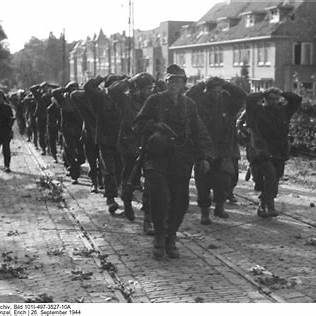
There was no shame in their surrender. They had fought with honour and bravery beyond what could have been expected.
Historian Martin Middlebrook noted
“We were forced to march, some of us in terrible pain. The Germans showed no mercy. Every step was agony, but we had no choice but to keep moving.”
Pvt. George Lauderl, 3rd Btn Paras.
They fought like lions, refusing to yield even when surrounded. Their tenacity was unlike anything we had encountered.
Oberstleutnant Hans von Luck, German Panzer Commander
The Horrors of Stalag XI-B
The captured paratroopers were eventually transferred to the infamous Stalag XI-B, located near Fallingbostel in Lower Saxony, Germany. Originally built in 1937 to house construction workers, the site had become one of the largest and most notorious German POW camps by the war’s end. It was overcrowded, disease-ridden, and brutal. British, Commonwealth, Soviet, French, Polish, Italian, and American prisoners were all crammed together in squalid conditions that worsened as the war dragged on.
The daily routine revolved around long, bitter roll calls—Appell—even in sub-zero temperatures, followed by meagre rations that barely kept men alive. A crust of black bread, watery cabbage soup, and sometimes nothing at all. Hygiene was non-existent, lice were everywhere, and diseases like dysentery and typhus spread quickly through the overcrowded huts.
Conditions in Stalag XI-B were primitive. Food was barely edible, and we were packed like animals. Some men were too sick to stand.”
Capt. Charles Doyle, prisoner
Prisoners were stripped of all belongings on arrival, including winter gear. They were housed in freezing wooden barracks, often with broken windows and leaking roofs, crammed several hundred to a hut meant for half that. Most men slept fully clothed, huddled together for warmth. Basic sanitation meant that latrines overflowed and washing was rare, especially in winter when water froze solid. Medical care was limited to whatever could be scrounged or smuggled. German guards provided little assistance, and the camp’s few overworked medics—usually POWs themselves—had no proper supplies. Wounds became infected. Fevers ran rampant. Death from malnutrition, exposure, untreated illness or despair was a constant shadow. While Marecheal never spoke of what happened there, his silence became its own testament to the trauma endured. There were no diary entries. No stories. Just a quiet refusal to revisit what had happened behind those fences. Others, however, filled in the gaps. Jack Edwards, a British POW held at XI-B, remembered: “You survived by sharing—your food, your warmth, your willpower. The men who didn’t, they faded away.”
Prisoners found strength in comradeship. They sang, they told stories, and they clung to rumours of Allied advances—any spark of hope. Some, like RSM John Lord, kept discipline alive by organising roll calls and insisting men shaved when possible, maintaining morale through routine and dignity. As the war neared its end and rations grew worse, tensions rose. By early 1945, the camp held tens of thousands of prisoners—far more than it was ever meant for. And with the sound of artillery rumbling in the distance, most prisoners knew something was coming. They just didn’t know what!
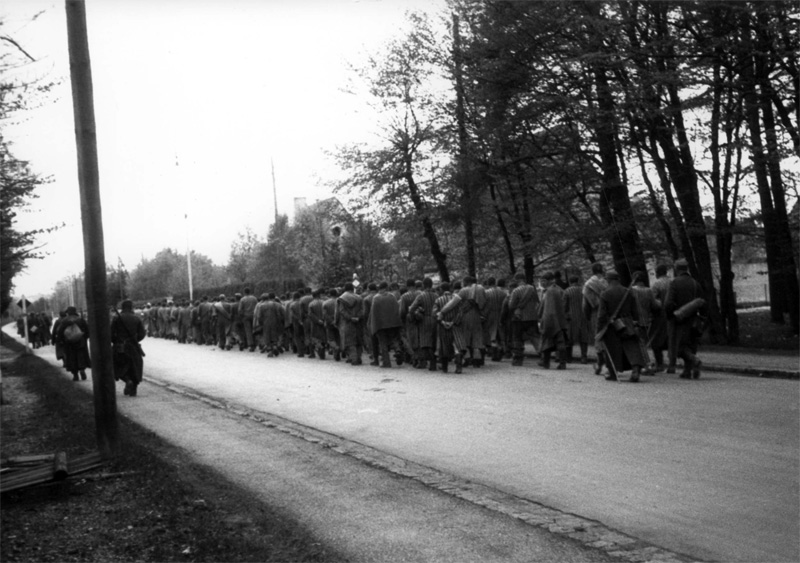
The Death March – A Nightmare on Foot
In early 1945, as the Allies closed in from both the east and west, the Nazi regime began evacuating POW camps in a desperate bid to keep prisoners from being liberated. The men held at Stalag XI-B were among tens of thousands forced to march through the crumbling Third Reich in what would later become known as the Death Marches—a series of brutal, chaotic evacuations carried out in the dead of winter.
The men at XI-B were told nothing. There was no warning—just orders to pack what little they had and fall into line. Armed guards with rifles and dogs barked instructions. Many prisoners had no proper boots, no coats, no food. Some were already weak with dysentery or infection. And yet, with snow falling and the temperature plunging well below freezing, they began walking—towards Stalag XIII-C in southern Germany, over 300 kilometres away.
Pvt. Tom Baker, a marcher from the same route, said: “It was a march to nowhere. We had no idea where we were going or when it would end. All we knew was that death was everywhere—at the side of the road, in the frozen fields, in the air.”
The march was not a single orderly column—it was chaos. Men collapsed within hours. Some died in their sleep at roadside halts. Others, too sick or frostbitten to walk, were left behind or shot. Witnesses later testified that the snow was stained with blood and that bodies were left unburied in ditches, frozen in place. Survivors shared a single Red Cross parcel between ten or more men, carefully rationing each scrap of biscuit, each spoonful of powdered milk. As the days wore on, discipline broke down on both sides. Some German guards, themselves exhausted and terrified of the approaching Allied lines, became increasingly brutal—while others turned a blind eye as POWs scavenged from abandoned barns or fled into the woods. There are even accounts of locals offering bread in secret, risking punishment to give the prisoners a chance at survival. Those who survived the march often did so by walking through the pain, linking arms to support each other, singing quietly to keep themselves awake. Others simply refused to give in. One unnamed British corporal, later quoted in a liberation report, said: “I’d made it through Arnhem, and I told myself I’d make it through this, even if I had to crawl.”
Read the full horror of the death marches in the next in the series: “The Death March – Endurance in the Face of Collapse”
Liberation at Last
On 16 April 1945, tanks from the 11th Hussars and reconnaissance units of the 8th Hussars rolled into Fallingbostel. The gates of Stalag XI-B were thrown open—not with fanfare, but with the stunned silence of men too exhausted to cheer. The soldiers who greeted the liberators were gaunt, skeletal figures, some wrapped in torn blankets, others barefoot, standing at attention as best they could.
Even after months of starvation, illness, and death, they held onto discipline and dignity. Lord’s insistence on military routine—parades, roll calls, shaved faces—wasn’t just about structure; it was about survival of spirit. And now, in front of British tanks flying the Union Jack, it had paid off.
Elsewhere, the long columns of prisoners who had been forced out of camps on the Death Marches were finally intercepted by Allied forces. Men dropped to their knees in fields and sobbed. Some had to be carried; others collapsed from sheer emotional overload. There are accounts of POWs hugging their liberators, unable to speak. British and American soldiers were reportedly horrified by the conditions they found: sunken faces, open wounds, lice infestations, men living in rags.

Some of the prisoners liberated at Fallingbostel had been marched for over 200 miles. Others hadn’t seen a Red Cross parcel in months. The medical teams who arrived with the Allies immediately began triage, feeding, and stabilisation, but the wounds—both physical and psychological—ran deep.
For men like Marecheal, liberation wasn’t a Hollywood moment. There was no celebration, no grand homecoming music. There was relief, yes—but also silence, shock, and the beginning of a new kind of survival: returning home to a world that hadn’t lived through what they had.
Freedom had come at a cost too great to measure.
Reflections
For men like Marecheal, captivity never really ended. He came home, yes—returned to familiar streets, to civvies, to a country trying to rebuild—but the war never truly left him. There were no stories shared over Sunday dinner, no dramatic retellings for the grandkids, no notebooks filled with memories. Not a word. Not even to those closest to him. Just a heavy, enduring silence. That silence became part of who he was. And over time, it became a kind of memorial in itself—unspoken but unmissable. The absences in his conversations, the way he would stare through windows at nothing in particular, the flat refusal to watch war films or attend parades. That silence spoke louder than any medal or photograph ever could.
He wasn’t alone. Across the country, thousands of ex-servicemen and POWs returned to normal life but kept the worst of it locked inside. There was no PTSD diagnosis back then. No understanding of trauma. Just an expectation to move on. And so, they did—quietly, stoically, and often alone.
That silence, though hard to hear, is its own legacy. It speaks not only of horror and pain but also of strength, endurance, and an unimaginable resilience. These men had faced starvation, beatings, death marches, the constant threat of execution—and still found a way to survive. But surviving didn’t mean forgetting.
It meant carrying it, day after day, year after year. It meant keeping others safe from what they’d seen—protecting their families from the nightmares they never described.
And for us, the next generations, that silence isn’t a void. It’s a signal. A quiet reminder to listen harder, to remember deeper, and to honour the sacrifice of those who came home changed—and never asked for recognition. Their courage didn’t end with the war. It carried on, in every quiet moment that followed.
Next in the Series: The Death March – Endurance in the Face of Collapse
Share this Story
From Arnhem to Captivity – the journey of Marecheal Niel & the 3rd Btn Paras
Share this Story A Bridge too Far: From Arnhem to Captivity – the journey of Marecheal Niel and the 3rd Btn Paras The Battle of Arnhem, part of the audacious Operation Market Garden, was one of the most significant engagements…
The Stand at Arnhem – The 3rd Battalion’s Heroic Defense
Share this Story A Bridge too Far: The Stand at Arnhem – The 3rd Battalion’s Heroic Defense The story of Arnhem’s bridge is one of extraordinary courage, bitter determination, and unrelenting sacrifice. On September 17, 1944, Lt. Col. John Frost’s…
The Death March – Endurance in the Face of Collapse
Share this Story A Bridge too Far: The Death March – Endurance in the Face of Collapse For the men of the 3rd Battalion, survival didn’t end with the battle at Arnhem. Nor did it end behind the wire at…
After Arnhem – Memory, Silence, and the Stories We Carry
Share this Story A Bridge too Far: After Arnhem – Memory, Silence, and the Stories We Carry Commemoration service for the Battle of Arnhem. Photo Credit: AFP Not every battle ends when the shooting stops. Some battles carry on quietly for…

